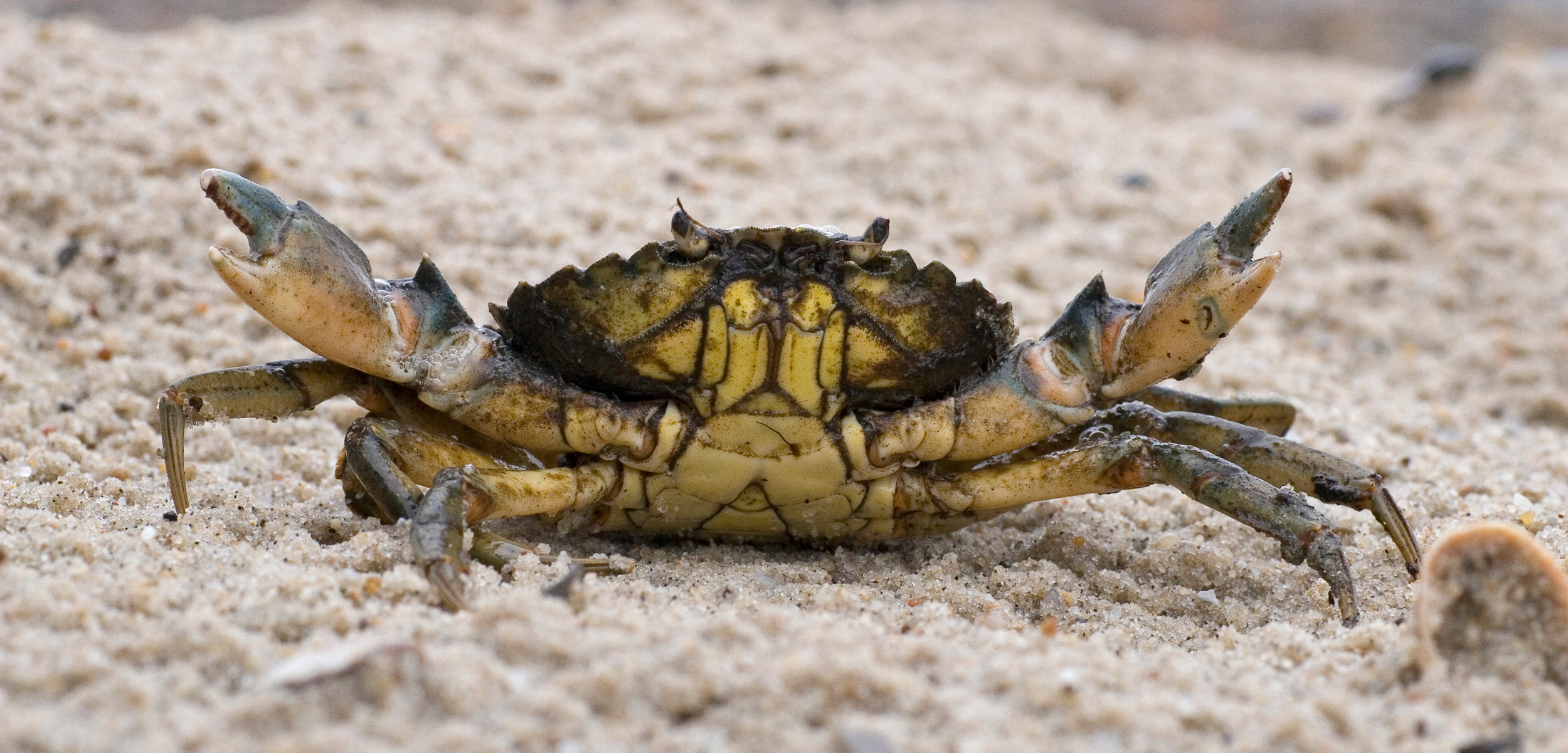Green Crabs Are Officially Delicious
Commodifying a harmful invader with technology typically used to pulverize chicken meat.
Article body copy
Kick over a rock or a chunk of turf along the coast of Maine and chances are a horde of invasive green crabs will scurry out. Since their accidental introduction to the North American coast by European ships in the early 1800s, green crabs have become among the most common creatures in the region. Commercial crabbers and lobster fishermen motor past millions of them every day because the credit card-sized crabs—though perfectly edible—are too small to be worth manually shucking.
A new processing technique explored in a scientific paper by researchers from the University of Maine could change that. By experimenting with a mechanical means of extracting meat from green crabs, they hope to create a market for the ecologically disruptive animals.
As a food scientist who specializes in reducing waste of seafood, researcher Denise Skonberg had long been aware of the Paoli One Step Deboner, a machine that resembles a meat grinder the size of a truck transmission. After workers strip off the chicken meat, carcasses are put in the machine, deboned, and emerge as a paste-like meat product. The machine can also be used for green crabs.
If green crab paste becomes commercially successful, it could become a key part of coastal habitat restorations.
“The cost of fuel would prevent it from being a specifically targeted catch,” says Skonberg, one of the paper’s three authors. Since fishermen are already on the water for high-value species such as lobsters, they could add the 7.5-centimeter-wide green crabs to their catch. “Instead of killing the crabs or throwing them overboard, they can have a bin for crabs and a bin for lobsters.”
A commercial fishery is unlikely to ever completely eradicate green crabs, but reducing their numbers would still benefit ecosystems and humans.
Green crabs alter their habitat in dramatic ways. Their activity, for example, disrupts and kills beds of eelgrass, which serve as essential protective cover for many species of juvenile fish. But most distressing to Mainers, the crabs eat clams in large quantities and compete with young lobsters for food.
The green crab problem has gradually worsened in northern waters. Historically, cold winters limited the population. A New Brunswick study in the 1950s and ’60s showed that as temperatures declined, so did the green crab populations. Monitoring traps went from an average of 343 crabs a day in 1956 to 7.5 a day in 1960. But with ocean temperatures warming, crab numbers have risen dramatically.
New introductions of green crabs in ballast water from northern Europe have recently provided cold-tolerant genes to the invasive population. This has probably contributed to the recent population explosion in the cold waters of Maine and Eastern Canada.
As the crab populations expand, perhaps human palates will too.
“Compared to other kinds of crabs, the flavor is sweeter,” Skonberg says. The texture of processed meat, however, isn’t quite what people expect from crab. “It’s more like a puree.
So there are challenges in using the finished product as food, but it is somewhat familiar to North Americans. Green crab puree is a variation of the centuries-old Asian seafood paste surimi. In the 1960s, Japanese researchers applied the principles of surimi production to cheap Alaskan pollock, creating imitation crab legs found in most North American grocery stores today.
Skonberg and her coauthors decided to use the green crab paste in a dish where the fibrous texture of normal crabmeat would not be missed: empanadas. And because this is science rather than just having fun in the kitchen, they conducted organized taste tests and collected data. Sixty-three percent of respondents said that they would “probably” or “definitely” buy crabmeat empanadas if they were available locally.
“It’s a realistic idea,” says Christina DeWitt, director of the Seafood Lab at Oregon State University, noting that the seafood industry uses all kinds of minced seafood in a variety of products. “I have never thought about surimi for crab, but it’s possible. We typically take low-value fish and convert it into surimi that is imitation crab, but this is already a crab.”

